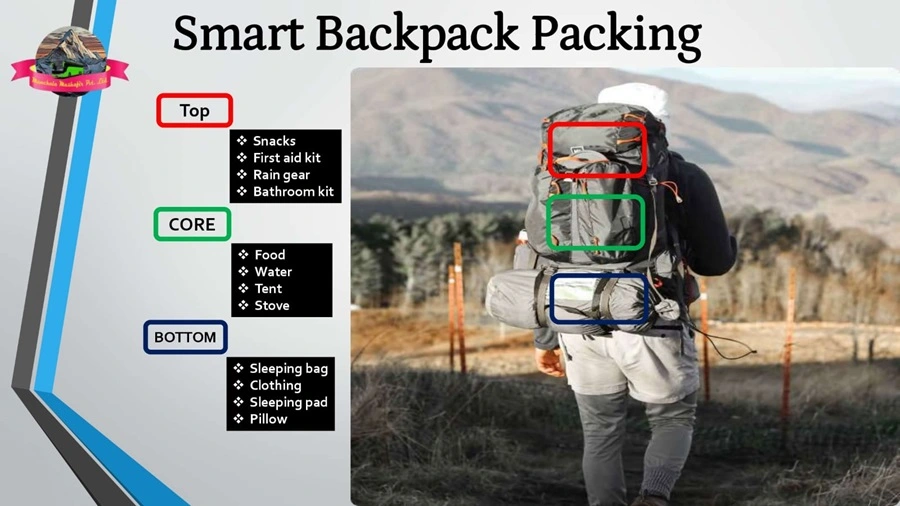Kedarkantha, a majestic peak in the Garhwal Himalayas, offers a breathtaking trek with panoramic views of the surrounding mountains. To ensure a comfortable and enjoyable experience, it's crucial to pack the right gear. This comprehensive guide will provide you with a detailed list of Things to carry, essential tips, and additional considerations to help you prepare for your Kedarkantha adventure.
About Kedarkantha Trek
Kedarkantha, a majestic peak in the Garhwal Himalayas, is the best winter trek in India and offers a breathtaking trekking experience with panoramic views of the surrounding mountains. Here's a comprehensive guide to help you understand what to expect from this popular trek:
Location and Geography
Kedarkantha is located in the Uttarkashi district of Uttarakhand, India. The peak rises to an altitude of 12,500 feet (3,812 meters), offering stunning views of the surrounding peaks like Bandarpoonch, Kala Nag, and Swargarohini. The trek typically starts from Mori or Haridwar, depending on your chosen route.
Difficulty Level
The Kedarkantha trek is considered moderate to challenging. While it doesn't require technical climbing skills, the high-altitude terrain, steep ascents, and occasional snow patches can be demanding for those who are not physically fit or accustomed to high-altitude trekking.
Best Time to Visit
The ideal time to trek Kedarkantha is from October to March when the weather is pleasant and the trails are relatively clear of snow. However, the peak is also accessible during the summer months, but the weather can be unpredictable with occasional rain and snow.
Acclimatization
Acclimatization is crucial for high-altitude trekking to prevent altitude sickness. It's recommended to spend a few days in lower-altitude areas before starting the Kedarkantha trek to allow your body to adjust to the reduced oxygen levels.
Permits and Regulations
To trek Kedarkantha, you'll need to obtain the necessary permits from the Forest Department. The permit fees may vary depending on the season and the number of trekkers. It's essential to follow the regulations and guidelines set by the authorities to protect the environment and ensure a safe and enjoyable trek.
Packing Essentials
A well-prepared packing list will ensure you have everything you need for a successful adventure. Remember to pack warm layers for cold temperatures, waterproof gear to protect yourself from rain and snow, and sturdy trekking boots with good traction. Don't forget essential equipment like trekking poles, a headlamp, and a first-aid kit. Pack a variety of non-perishable food items and plenty of water to stay hydrated. Additionally, bring personal items like toiletries, medications, and entertainment to enhance your comfort and enjoyment. By carefully considering these packing essentials, you can ensure a memorable and rewarding Kedarkantha trek.
Clothing
Warm Layers:
Down jacket or synthetic insulated jacket: A high-quality down or synthetic insulated jacket is essential for staying warm in cold temperatures. Look for a jacket with a high fill power or insulation rating to ensure optimal warmth.
Fleece jacket: A mid-layer fleece jacket provides additional insulation and can be worn on its own or under your outer jacket.
Thermal wear (base layers): Thermal base layers wick away moisture and keep you warm even when wet. Opt for merino wool or synthetic fabrics for optimal performance.
Warm pants or trekking trousers: Insulated or waterproof pants are necessary to keep your legs warm and dry in cold and wet conditions. Consider convertible pants that can be transformed into shorts for warmer weather.
Waterproof Gear:
Gore-Tex or waterproof jacket and pants: A waterproof jacket and pants with Gore-Tex or other breathable waterproof materials are essential to protect you from rain and snow.
Waterproof gloves and hat: Keep your hands and head warm and dry with waterproof gloves and a hat. Look for gloves with a waterproof membrane and insulation.
Other Clothing:
T-shirts: Pack several t-shirts for layering and changing.
Casual pants or shorts: Bring comfortable pants or shorts for casual wear around the campsite.
Trekking socks: Invest in high-quality trekking socks that are moisture-wicking and provide cushioning to prevent blisters. Bring multiple pairs.
Lightweight beanie or cap: A beanie or cap can help keep your head warm in cold weather and protect your face from the sun.
Footwear
Trekking boots: Sturdy, waterproof, and ankle-high boots with good traction are essential for the Kedarkantha trek. Look for boots with a waterproof membrane and good ankle support.
Trekking sandals or shoes: Bring a pair of lightweight trekking sandals or shoes for casual wear around the campsite.
Sleeping Gear
Sleeping bag: A comfortable sleeping bag rated for below-freezing temperatures is necessary to stay warm during the night. Look for a sleeping bag with a high-temperature rating and a comfortable feel.
Sleeping pad or mattress: A sleeping pad or mattress provides insulation and comfort while sleeping. Choose a pad with a high R-value for optimal insulation.
Equipment
Backpack: A sturdy backpack with a capacity of 40-50 liters is ideal for carrying your gear. Look for a backpack with comfortable shoulder straps and a hip belt.
Trekking poles: Trekking poles can help reduce strain on your knees and provide stability on uneven terrain.
Headlamp or flashlight: A headlamp or flashlight is essential for nighttime activities and navigation.
Water bottles: Bring multiple water bottles or a hydration pack to stay hydrated throughout the trek.
Food and cooking gear: If you're cooking your meals, bring necessary items like pots, pans, stoves, fuel, and utensils.
Sunscreen and lip balm: Protect your skin from the sun's harmful rays with sunscreen and lip balm.
Sunglasses: Sunglasses can help protect your eyes from the bright sunlight and snow glare.
Insect repellent: To ward off mosquitoes and other insects, bring insect repellent.
Camera and accessories: Capture the stunning views of Kedarkantha with a camera and accessories.
Personal items: Bring any personal items you may need, such as toiletries, medications, and entertainment.
Food
Packaged food: Bring a variety of non-perishable food items, such as energy bars, trail mix, nuts, dried fruits, and instant noodles.
Fresh produce: If possible, pack fresh fruits and vegetables that can be easily carried.
Hydration: Drink plenty of water throughout the trek to stay hydrated.
First-Aid Kit
A well-equipped first-aid kit is crucial for any outdoor adventure, especially a high-altitude trek like Kedarkantha. Here's a list of essential items to include in your first-aid kit:
Wound Care:
Sterile gauze pads
Adhesive bandages
Medical tape
Antiseptic wipes or solution
Pain Relief:
Over-the-counter pain relievers (e.g., ibuprofen, acetaminophen)
Antihistamines (for allergies)
Blister Care:
Blister pads
Moleskin
Additional Considerations:
Personal Medications: If you have any pre-existing medical conditions, bring any necessary medications.
First-Aid Training: Consider taking a basic first-aid course to learn how to properly use the items in your kit and respond to common injuries.
It's important to note that this is just a basic list, and you may need to customize your first-aid kit based on your personal needs and the specific conditions of your trek. Consult with a healthcare professional for personalized advice.
Tips for Packing
Pack light: Avoid packing unnecessary items to reduce the weight of your backpack.
Layer up: Dress in layers to adjust to changing weather conditions.
Pack waterproof bags: Protect your belongings from rain and snow by packing them in waterproof bags.
Bring essentials: Don't forget to pack essential items like your passport, identification, and any necessary permits.

Additional Considerations:
Acclimatization: If you're new to high-altitude trekking, consider a few days of acclimatization in nearby towns or villages before starting the Kedarkantha trek.
Trekking Permits: Obtain the necessary trekking permits from the local authorities before starting your trek.
Local Guides: Hiring a local guide can provide valuable insights, assistance, and knowledge of the trail.
Emergency Contact: Share your itinerary and emergency contact information with friends or family.
Note: If you are planning to visit Kedarkantha you can also explore the Kedarnath trip In this you can experience the Kedarnath trek through Manchala Mushafir we also provide a Char dham yatra package at an affordable price
Conclusion
By following the comprehensive packing list and tips provided in this guide, you'll be well-prepared for your Kedarkantha trek and can embark on a memorable adventure in the Himalayas. Remember to pack appropriately for cold, wet, and high-altitude conditions. Acclimatize if you're new to high-altitude trekking. Respect the environment and other trekkers. Enjoy the journey and appreciate the stunning scenery. Kedarkantha is a challenging yet rewarding trek that offers unforgettable experiences. By planning carefully, packing appropriately, and staying safe, you can create lasting memories and fully enjoy your adventure in the Himalayas. Remember, the journey is as important as the destination. Embrace the challenges, appreciate the beauty, and cherish the moments spent in nature.


